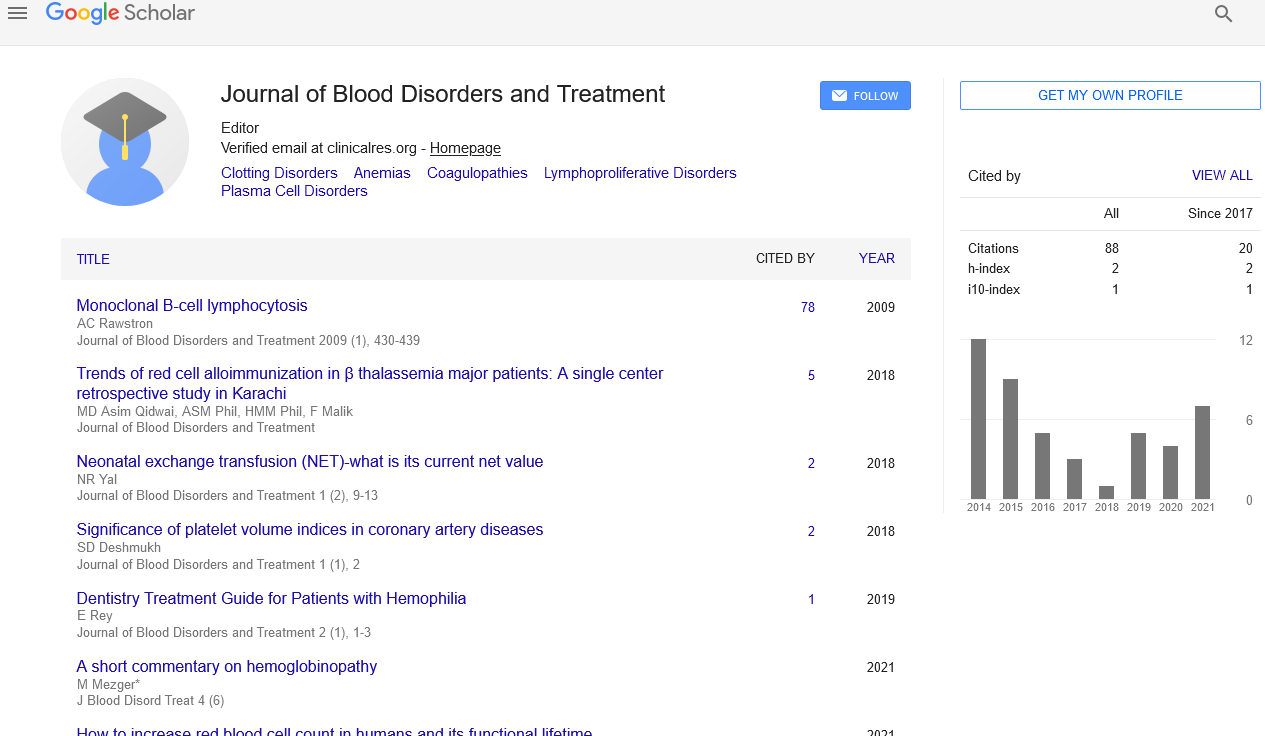Short Communication on Gene Therapy
Received: 03-Mar-2021 Accepted Date: Mar 16, 2021; Published: 23-Mar-2021
Citation: Sharma A. Short Communication on Gene Therapy. J Blood DisordTreat. 2021;4(2):2.
This open-access article is distributed under the terms of the Creative Commons Attribution Non-Commercial License (CC BY-NC) (http://creativecommons.org/licenses/by-nc/4.0/), which permits reuse, distribution and reproduction of the article, provided that the original work is properly cited and the reuse is restricted to noncommercial purposes. For commercial reuse, contact reprints@pulsus.com
Introduction
Gene therapy is to settle a hereditary issue at its source. In case, for occasion, in an acquired malady a transformation in a certain quality comes about within the generation of a dysfunctional protein, quality treatment may be utilized to convey a duplicate of this quality that does not contain the pernicious change, and in this manner produces a utilitarian protein. This procedure is alluded to as quality substitution treatment and is utilized to treat acquired retinal diseases [1, 2].
Gene therapy can be classified into two types: In substantial cell gene therapy , the restorative qualities are exchanged into any cell other than agamete, germ cell, gametocyte, or undifferentiated stem cell. Any such alterations influence the person persistent as it were, and are not acquired by descendant. Physical quality treatment speaks to standard fundamental and clinical inquire about, in which helpful DNA is utilized to treat disease [3]. In germline gene therapy , germ cells are altered by the presentation of utilitarian qualities into their genomes.
Adjusting a germ cell causes all the organism's cells to contain the altered quality. Gene therapy offer to replace a defective gene with a solid gene have been proposed and are being considered for treating a few hereditaryillnesses.Illnesses such as sickle cell illness that are caused by autosomal latent disarranges for which a person's typical phenotype or cell work may be reestablished in cells that have the illness by a ordinary duplicate of the quality that's transformed, may be a great candidate for quality treatment treatment [4].
Although gene therapy may be a promising treatment choice for a number of illnesses (counting acquired disarranges, a few sorts of cancer, and certain viral contaminations), the procedure remains risky and is still under study to make sure that it'll be secure and effective. Gene therapy is right now being tested only for illnesses that have no other cures. Hereditary designing may well be utilized to remedy infections, but too to alter physical appearance, metabolism, and indeed make strides physical capabilities and mental resources such as memory and insights.
Moral claims about germline designing incorporate convictions that each hatchling contains a right to stay hereditarily unmodified, that guardians hold the proper to hereditarily adjust their offspring, which each child has the correct to be born free of preventable diseases [5].
Conclusion
Gene therapy is a test method that employments genes to treat or avoid infection.to treat a disorder by embeddings a gene into a patient’s cells ratherthan utilizing drugs or surgery.
REFERENCES
- Maguire AM, Simonelli F, Pierce EA, Pugh EN, Mingozzi F, et al. "Safety and efficacy of gene transfer for Leber's congenital amaurosis". The New England Journal of Medicine. J Blood Disord Treat. 2008; 358: 2240–2248.
- MacLaren RE, Groppe M, Barnard AR, Cottriall CL, Tolmachova T, et al . "Retinal gene therapy in patients with choroideremia: initial findings from a phase 1/2 clinical trial". Lancet. J Blood Disord Treat.2014; 383: 1129–1137.
- Williams DA, Orkin SH. "Somatic gene therapy. Current status and future prospects". The Journal of Clinical Investigation. J BloodDisord Treat . 1986; 77: 1053–6.
- Olowoyeye, Abiola, Okwundu, Charles I. "Gene therapy for sickle cell disease". The Cochrane Database of Systematic Reviews. 11. J Blood Disord Treat. 2020.
- Powell R, Buchanan A (February 2011). "Breaking evolution's chains: the prospect of deliberate genetic modification in humans". The Journal of Medicine and Philosophy. J Blood Disord Treat.2011; 36: 6–27.





